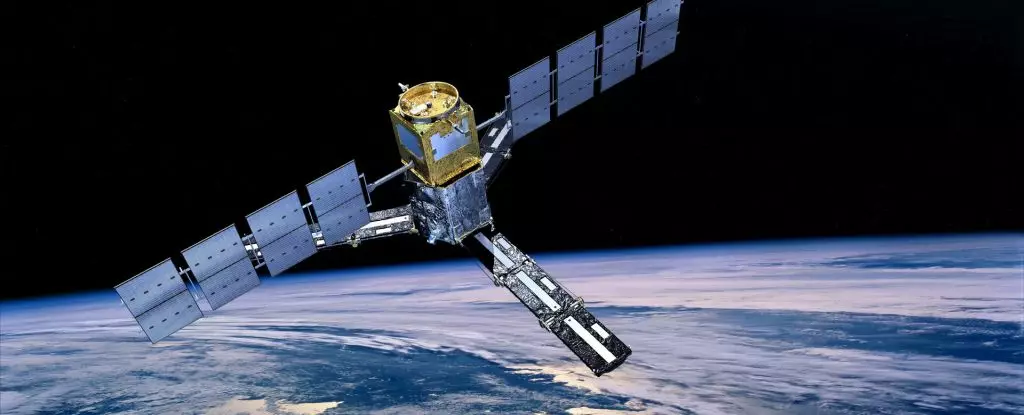The increasing concentration of greenhouse gases in our atmosphere spells doom not just for the planet but also for the delicate ecosystem that we have created in Low Earth Orbit (LEO). While climate change is often analyzed through the lens of rising sea levels and extreme weather, a recent study highlights a lesser-known consequence: an escalated risk of space junk accumulation. The findings from a research team led by William Parker at MIT suggest that under high-emission scenarios, our ability to safely operate satellites could be sharply diminished by 2100. The ramifications for both current and future satellite endeavors are alarming, yet they go mostly unaddressed.
The Finite Frontier: Limits of Low Earth Orbit
The myth that space is an infinite expanse is one that we cannot afford to hold onto any longer. Contrary to popular belief, the accessible region for satellite operations is severely limited. With altitudes usually ranging from about 200 to 1,000 kilometers, the area is on the brink of becoming choked with debris. This precarious situation is made worse by the possibility of Kessler Syndrome, a catastrophic event where collisions among objects in orbit lead to a chain reaction, generating a cloud of debris that remains in orbit for generations. With the projected increases in greenhouse emissions, the capacity of LEO could become threatened not only due to overcrowding but also due to aerial drag dynamics influenced by Earth’s atmospheric conditions.
Climate Change: The Hidden Variable in Orbital Mechanics
The lack of focus on how climate change interacts with orbital dynamics is a glaring oversight within both environmental and aerospace communities. Increased greenhouse gas emissions lead to alterations in the thermosphere, the atmospheric layer situated between 85 and 600 kilometers above Earth. Current observations indicate that, unlike anything previously recorded, this layer is shrinking. Smaller densities in the thermosphere mean that satellites encounter decreased drag when they orbit Earth. This is a double-edged sword; while enhanced altitude stability may benefit functioning satellites, it poses a grave danger for defunct objects.
Satellites that—once their operational life is over—are intended to descend into Earth’s atmosphere for safe disposal will linger in our orbit much longer, increasing the hazard they present to operational satellites. The research team at MIT posits that the current trajectory of greenhouse emissions threatens to create a situation where fewer satellites can effectively deorbit, thus prolonging the life of inert debris.
The Kessler Syndrome: An Imminent Threat
As debris accumulates through collisions and malfunctions, the prospect of Kessler Syndrome becomes more pressing. Parker’s team discovered through their analytical models that in worst-case emissions scenarios, LEO could experience a staggering 60% reduction in usable capacity during solar maximum and an alarmingly high 82% during solar minimum by the turn of the century. Given that we are already hosting around 11,901 operational satellites amidst 20,000 pieces of known debris, this looming crisis demands urgent attention.
While we are currently not experiencing what could be termed Kessler stability—where the number of collisions spirals uncontrolled—the situation is precarious. More and more satellite operators are planning for squadrons of satellites to be deployed to enable services like global internet. However, neglecting the considerations of atmospheric dynamics invited by climate change makes the situation increasingly dire.
The Need for Preemptive Action
As humanity pushes the boundaries of what’s possible in orbital technology, ignoring the implications of greenhouse gas emissions is not just myopic; it is perilous. Unified action is critical. Policymakers, aerospace engineers, and environmentalists must come together to create robust frameworks for both emission reductions and debris mitigation. This includes advocating for technologies that can enhance satellite disposal processes and initiatives aimed at minimizing emissions from industrial activities linked to space operations.
While the research shows that we have a significant window—millions of satellites could still coexist without triggering catastrophic conditions—the urgency to act now cannot be overstated. It is on us to avoid an overcrowded LEO zone where operational satellites become increasingly strained by the obstacles of space junk, ultimately threatening the very infrastructure we rely upon.
Final Thoughts
In sum, the interconnection between greenhouse emissions and the future of orbital operations paints a worrying picture. While the cosmos may be vast, the manageable area around Earth is limited and becoming increasingly perilous. As we stand at this critical junction, our response today will determine the sustainability of our celestial ambitions tomorrow.

